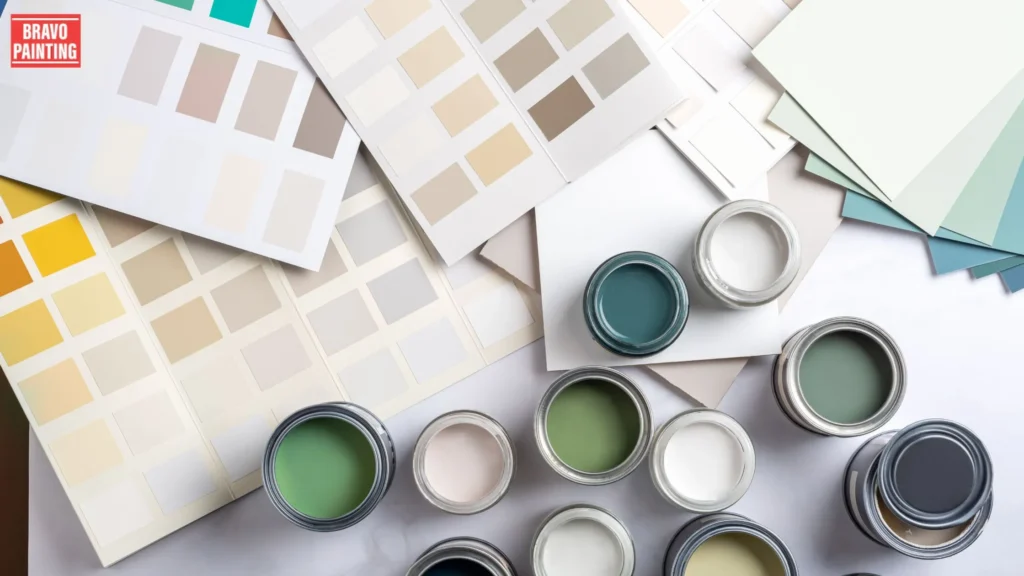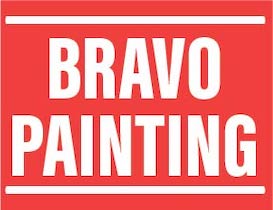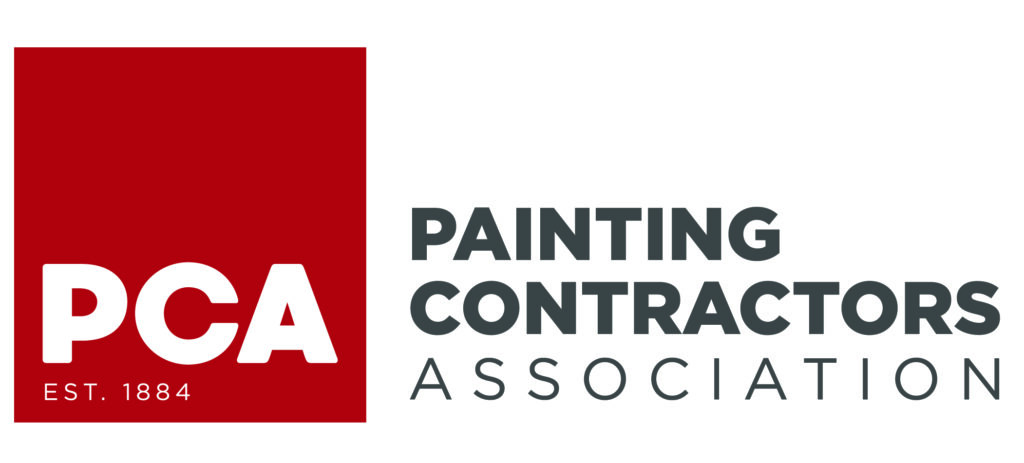Choosing the right paint is relatively complex when painting a house as it comes in many styles and finishes and various makes with different characteristics.
The walls of your house, if painted well, can last for a long time and have a good appearance. Coverage, sheen, and VOC levels determine the final result.
So, in this article, we are going to guide you in selecting good quality paint by choosing top brands from professional painters.
Furthermore, finding the right painting contractors can make all the difference in achieving a smooth, durable finish and long-term results.
Qualified professionals will be able to offer you the best recommendations based on your budget, room usage, and aesthetic preferences.
In this guide, you will learn key pointers about choosing the right paint according to the room’s purpose, lighting, and durability.
Finally, with good paint and some skilled contractors, you will achieve a beautiful, sustainable finish that adds appeal to your place and meets all expectations.
The Paint Dilemma
The paint is where things get a little shaky due to the many kinds of paint available with varied characteristics.
This article provides important information on the brands preferred by home painting contractors and aims to help you understand top brands, types to look for, and how to find the best home painting contractors locally.
Why Quality Paint?
Value for Money
Selecting quality paints may mean fewer coats are required.
Quality paints are supposed to have an excellent finish that lasts long, ultimately saving you both time and money.
Ease of Application
Quality paints hold open times well, preventing clots and enabling easy, effective application.
This is advantageous for painting professionals who aim to complete jobs more efficiently with a superb-quality product.
Eco-Friendly and Low-VOC Options
Low-VOC and eco-friendly paints are increasingly popular, especially for interior projects, as they reduce the impact on indoor air quality.
Most major paint brands now offer low-VOC options, allowing you to enjoy both beauty and safety in your home.
Coverage and Hide
- Coverage refers to how the paint flows across the surface.
- Hide indicates the ability to cover previous colors.
Ideally, more costly paints provide better coverage, enabling contractors to work more efficiently with fewer coats.
Open Time
This is the time before the paint becomes tacky, impacting how well it tracks and levels on the wall.
Longer open times benefit home painting contractors, especially for large areas, by making the application smoother.
Sheen Level
The sheen level influences both aesthetics and functionality. The most popular finishes are:
- Eggshell: A balance between subtle gloss and durability for walls.
- Satin: Slightly more shine, easier to clean, suitable for high-traffic areas.
- Glossy: Ideal for trims and accents but highlights imperfections on walls.
VOC Levels
Low-VOC paints emit less odor, making them safer for indoor use and beneficial for indoor air quality.
This is an essential consideration for families and environmentally conscious homeowners.
Recommended Paint Brands by Professional Home Painting Contractors

Sherwin-Williams
Sherwin-Williams offers products like Emerald and Duration, known for their durability and rich color.
These paints are popular among contractors, providing good coverage and available in low-VOC formulas.
Benjamin Moore
Benjamin Moore’s lines like Aura, Regal Select, and Ben are favored for exceptional coverage and quality.
It offers low- and zero-VOC options, making it ideal for interior projects.
Behr
Available at Home Depot, Behr offers quality and value with lines such as Premium Plus Ultra and Marquee, popular for their durability and application.
Farrow & Ball
Farrow & Ball paints are high-end, with luxurious finishes and eco-friendly formulations.
They are favored for upscale projects, valued by those who prioritize aesthetics and sustainability.
PPG
PPG provides a range of colors and formulas, with the PPG Timeless line particularly suited for long-lasting application and ease of use.
Valspar
Valspar products offer good coverage and lower VOC levels, making them budget-friendly and suitable for interior and exterior applications.
Working with Home Painting Contractors
Finding Reliable Contractors in Your City
When searching for “home painting contractors near me,” look for those with strong reviews and credible credentials.
Use platforms like Angie’s List, Houzz, and Google Reviews to find experienced contractors.
Reviewing Bids and Paint Recommendations
Ask contractors for a comprehensive estimate, including paint brand suggestions.
A professional contractor will recommend quality paints that match your budget and desired finish.
Communication is Key
An experienced contractor should discuss various brands, explain their pros and cons, and provide insights on sheen, durability, and coverage.
Clear communication helps ensure your project meets your expectations.
Tips for Choosing the Right Paint for Your Project
Consider the Room’s Purpose
For high-traffic rooms like kitchens or bathrooms, a satin or semi-gloss finish is advisable for easy cleaning.
Bedrooms and living rooms can benefit from an eggshell or matte finish, creating a calmer atmosphere.
Think of Natural Lighting
Glossy finishes work well in well-lit rooms, while matte finishes reduce glare in dimmer spaces.
Durability and Washability
Durable, washable paints are ideal for homes with children or pets.
Benjamin Moore’s Regal Select and Sherwin-Williams Duration are known for their washable finishes.
Choose Low-VOC Products
Many manufacturers now offer low- or zero-VOC formulas, emitting fewer chemicals and ensuring safer indoor air quality.
Conclusion
Selecting the right paint brand and finish is crucial for a successful home project, and experienced home painting contractors can provide invaluable guidance.
Understanding paint quality factors—like coverage, sheen, VOC levels, and durability—helps make informed choices that meet both style and functional needs.
Collaborate with skilled contractors who can recommend the best products for each room, ensuring a perfect, long-lasting finish that enhances your home.
FAQs
How do I select the best home painting contractor for my project?
Research local contractors with good reviews who are properly licensed and insured. Ask friends or family for recommendations and review portfolios where you can see previous projects that they have done. Get multiple estimates and speak to them about their preferred paint brands, timelines on a project, and warranty options. Professional home painters will have a clear and detailed plan and be happy to address any concerns prior to starting the project.
What’s the distinction between high gloss, semi-gloss, eggshell, and matte?
Each finish has differing features with its uses :
High Gloss: Extremely reflective and more resistant; use trim and cabinetry work.
Semi-Gloss: less shiny, still glossy, but excellent for bathroom/kitchen spaces since it may be very easy to wipe off clean.
Eggshell: low sheen but possesses a soft appearance; most suitable for the interior of your living room as well as bedrooms.
Matte: Flat finish, no gloss; this finish is best for concealing imperfections in walls and creating a very casual look, often in low-traffic areas.
How many coats of paint are generally required to get a professional finish?
Two coats are widely accepted as the standard to obtain an even, hard-coated finish, especially to cover a darker color with one that is lighter. More expensive paints, such as Behr Marquee and Benjamin Moore Aura, are made in a way that produces optimal coverage with one coat only. However, contractors frequently install additional coats to have more depth and consistency.
What are VOCs, and why would I select low-VOC or zero-VOC paints?
These are VOCs or Volatile Organic Compounds. They literally evaporate as the paint dries, and upon doing so, they emit smelly fumes that negatively impact one’s indoor air quality, to say the least, health-wise, too. Low- or no-VOC paints are also a safer bet, especially when it comes to indoor use: they create fewer smells and fewer damaging chemicals altogether. Most companies that make paint have introduced low-VOC products over the years, and these now form the benchmark for indoor use.
How long should I wait before moving furniture back into a freshly painted room?
While most latex paints take only 1-2 hours to dry to the touch, the furniture has to be replaced only after 24 hours because that much time is required to harden and set up. Oil-based paints generally have a longer drying time, so you will have to check with your painting contractor about their specific drying time.
Can I use the same paint for interior and exterior jobs?
No, interior and exterior paints are made with different formulations to address the conditions under which they are exposed. Exterior paints have been formulated to withstand the rigors of UV, moisture, and temperature. Interior paints focus on durability, cleanability, and appearance. Use paints made specifically for the job they are intended to be used on for maximum performance and longevity.
How do I choose the correct sheen level for each room in my house?
The sheen level of paint impacts both the aesthetic and functional elements of a space. For high-traffic areas such as kitchens, bathrooms, and hallways, a satin or semi-gloss finish is recommended because these finishes are more durable, stain-resistant, and easier to clean. For bedrooms and living rooms, matte or eggshell finishes sometimes soften the appearance of paint and give a relaxed feel to an elegant look while using little shine. The glossy finish is suitable for trims and moldings but may be too focused on the defects on the walls for general painting. For relatively bright rooms, slightly shiny finishes would be suitable, but for rooms that do not have bright lighting, matte finishes will not give any glare. Consult with a painting professional to decide what finish is suited to the room, given how much it is used and what kind of lighting exists there, as well as the aesthetic you are aiming for.



